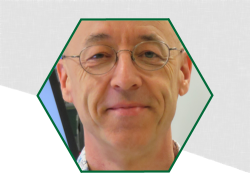Shortly after the invention of the laser, seminal work investigated its potential to deposit thin films in vacuum. In particular, the high power density of focused laser radiation was immediately recognized to enable the deposition of materials that are very hard to evaporate otherwise. The stoichiometry of the thermally evaporated films, however, was poor,
and with the advent of high-Tc superconductors, all efforts focused on pulsed laser deposition (PLD), in which a stoichiometric plasma is generated via ablation with short pulses.
In parallel, molecular beam epitaxy (MBE) developed an approach in which very high quality films are formed by evaporating individual elements from separate sources and combining them on the substrate in a self-adjusting process. Some of the purest materials know to mankind have been produced with this approach. Substrates and sources are heated with resistive filaments, limiting this approach to relatively low temperatures.
Many elements require very high temperatures to be evaporated at reasonable rates, which lead to the development of (metalorganic) chemical vapor deposition ([MO]CVD), in which the elements for forming the film are supplied as more reactive chemical compounds that decompose on the substrate surface and release the cargo atoms. MOCVD currently is the dominant high-volume production technology for epitaxial films with applications, e.g., in LED lighting and power electronics.
With the advent of affordable high-power laser sources, we have re-investigated the original approach of CW thermal evaporation, combining its ability to evaporate any material at any temperature with the now well-understood MBE high purity synthesis approach using individual elemental sources. This approach, called thermal laser
epitaxy (TLE), typically uses a long-wavelength CO? laser to heat the substrate on which the film is deposited, and several elemental sources, each heated by individual CW fiber lasers, to expand the parameter space of MBE type deposition to cover all elements and all substrates. Since the reactor chamber only contains mechanical holders for the sources and the substrate, and entrance windows for the lasers, almost any chemical environment and ultrahigh temperatures (> 2000 °C for substrates, > 3500
°C for sources) are possible, thereby also allowing the seamless integration with all other established techniques such as (MO)CVD.
I will discuss results obtained at the Max Planck Institute in Stuttgart, where this technology was developed. We find that TLE dramatically widens the parameter space of epitaxial growth techniques, on one hand encompassing the possibilities of practically all existing approaches to serve as a versatile high throughput tool for industrial production, but in addition going significantly beyond and enabling the synthesis of new materials in thin film form which cannot be made with any other method.
Keywords
- Thermal Laser Epitaxy (Tle)

